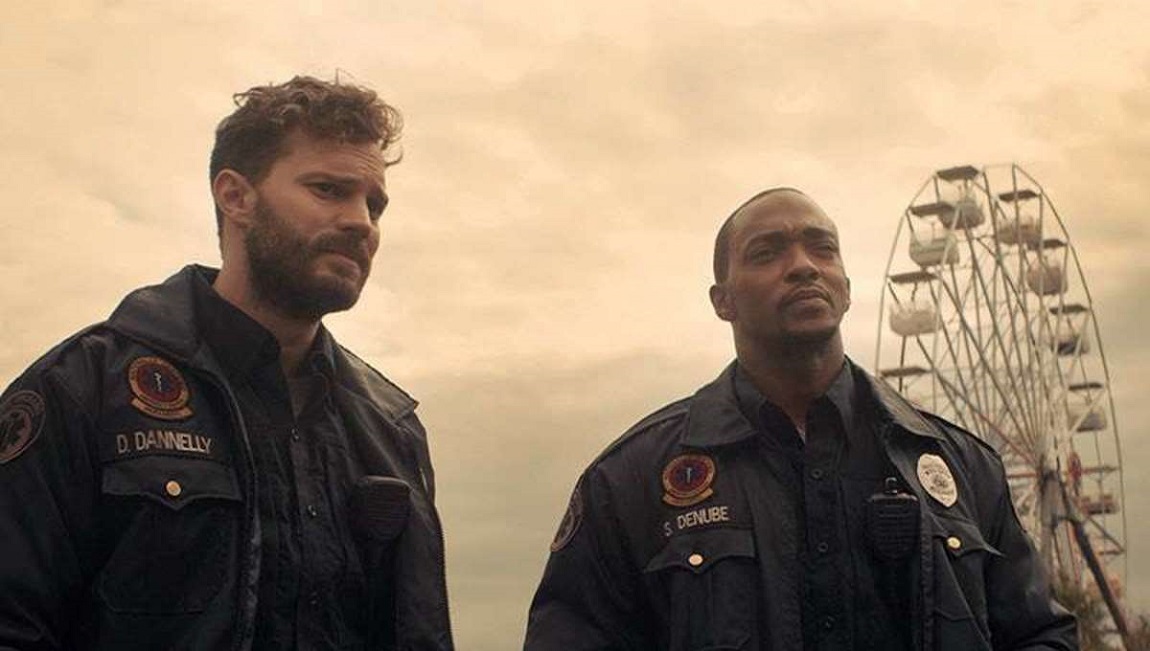Synchronic does many things well but ultimately fails to must the creative energy its directors typically bring.
In Synchronic, the new film from directors Justin Benson and Aaron Moorhead, two paramedics, Steve (Anthony Mackie) and Dennis (Jamie Dornan), stumble across a series of bizarre, gruesome deaths linked to a new designer drug. This drug, it turns out, causes the user to travel through time and space, though without any sense of control and only for a limited period of time. Instead of an overdose, death might come courtesy of a snakebite in some rainforest or by being run through by a medieval knight. After Dennis’ daughter goes missing from the scene the two are investigating, Steve, reeling from a recent terminal diagnosis himself, sets out to find a way to bring her back. This is the most straightforward premise Benson and Moorhead have presented yet and their equally uncomplicated approach to the material signals a bid for a mainstream breakthrough.
In its treatment of science fiction, Synchronic resembles nothing more than one of Christopher Nolan’s exposition-laden blockbusters. When Steve begins conducting his own experiments with the time travel drug, he records himself, giving the film an easy excuse to explain its own rules at length. Make no mistake, this is soft sci-fi stuff, and the constant explanation is less an act of world-building — think about any one aspect for more than a moment and it easily crumbles — than one of table-setting. When Nolan spends the first hour of Inception delivering one exposition dump after another, he doesn’t do so to convince anyone that the film’s premise has any basis in reality, but rather to establish easily legible stakes in the complicated spectacle to come. Benson and Moorhead operate on those same principles here so that, when things start to go wrong in Steve’s trips into the past, suspense is mustered without extra fuss. This is especially true in one sequence involving Steve’s dog, which is the most harrowing bit of business in the whole film and not just because it involves a dog.
But Synchronic isn’t afforded the unlimited stores of money that Nolan’s films are given, and its few set pieces have to rely on pure creativity. Outside of one or two memorable sequences, though, the filmmakers come up short on this front, demonstrating their limitations more often than overcoming them. Sets for the time travel sequences are drab, consisting of enclosed spaces with digital backgrounds populated by too few other people whose only personality trait seems to be a desire to kill Steve. Worse, many of these sequences are informed by a lack of creativity that is deeply uncharacteristic of its directors, who have made a name for themselves on weird low-budget horror flicks that typically amount to more than the sum of their modest parts.
At its worst, some of Synchronic’s most rote ideas brush up against sociopolitical concerns in a way that seems thoughtless and callous, most notably in a scene where Steve is mistaken for a slave on an 18th century battlefield. These White filmmakers aren’t articulating anything with this scene but are instead carelessly evoking racist trauma when their main character is already in enough danger just by being on the business end of a musket. It’s a lazy way to raise the stakes, which by this point the film has had no trouble doing much more naturally. That this comes at the end of the film and that this Black man’s trauma is ultimately the device by which a White family is reunited leaves a lingering bad taste that overshadows so much of what Synchronic does well.







